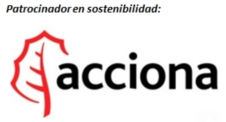2016
New year is coming, and the departure day is approaching.
When preparing such a flight, there is always something to do, and something missing. So, there is always a lot of work pending.
As I am going now for the northern hemisphere, I had planned to test the belly tank after that flight. The fact is that I will do it very soon, to have the Spanish Civil Aviation approving also that external fuel tank.
I will fly the airplane, first at low speed, using a camera under the wing, to have a good look at the fuel tank. After a short flight and if the video shows no visual vibrations of the tank, I will test it at high speed.
Why high speeds?
Because Carson speeds at max gross weight are high for this airplane.
taken from the web:
The speed to fly for the CAFE races was the speed at which the product of groundspeed and miles per gallon was greatest. It happens that that speed coincides with the “Carson speed,” named after a former Naval Academy professor of aerospace engineering, Bernard H. Carson. In a 1980 paper entitled “Fuel Efficiency of Small Aircraft,” which is in the public domain and ought to be available on the internet for download but isn’t, Carson observed that, because they need to climb, airplanes are provided with much more power than they need to cruise at their most efficient speed, the “best L/D speed” or “best range speed.” Since this additional power allows airplanes to go much faster, the question naturally arises of how to get the most extra speed for the least extra cost – or, as Carson put it, of finding “the least wasteful way of wasting.” The speed in question turned out, theoretically at least, to be the one at which the product of speed and L/D, or lift-drag ratio, was greatest. This was 1.32 times the speed for most miles per gallon (that is, the best L/D speed).
In 1993, Russ Erb of EAA Chapter 1000 (Muroc, California) published a paper, which can be found online (search for “Carson speed”), in which he identified the Carson speed as the speed for the highest ratio of speed to thrust (which is equal in magnitude to drag). Erb pointed out, again, that this was 1.32 (the fourth root of three) times the best L/D speed. (The best L/D speed, by the way, is in turn 1.32 times the best endurance speed or least-power speed. Who would have guessed that airplanes had such a profound affinity for the fourth root of three?) As a practical matter, however, the real Carson/CAFE speed is higher than calculation would suggest, because both propeller efficiency and specific fuel consumption (the amount of fuel required per horsepower per hour) improve, up to a point, as the airplane goes faster, and as a result the actual best range speed
La fecha de partida se aproxima.
En este tipo de proyecto, uno siempre llega al 95% de labor hecha y siempre queda otro 95% por hacer.
Aunque inicialmente había tomado la decisión de postponer las pruebas del depósito externo para después de esta primera parte del vuelo que estudia el hemisferio Norte, al final las haré en breve.
De esta forma se facilitan las gestiones de certificación ante Aviación Civil.
La idea es usar una cámara de video debajo del ala, para probar el depósito a baja velocidad (185 kms/h) y aterrizar enseguida. Si la grabación muestra que no hay vibración visible, entonces probaré el depósito a alta velocidad.
Y porqué a alta velocidad?
Porque en principio volaré a velocidades ¨Carson¨ que a pesos máximos, son elevadas.
En el texto que he tomado de la web (un poco más arriba), y en ingles, podéis leer un poco acerca de esta interesante velocidad y de los caprichos de la aviación









You must be logged in to post a comment.